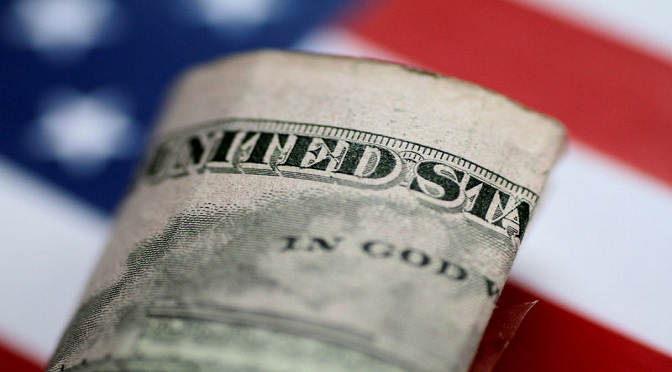-
Authoradmin
-
Comments0 Comments
-
Category
By Tommy Wilkes
LONDON (Reuters) – The dollar rose towards 2 1/2-month highs on Tuesday, supported by worries about an escalation of the Sino-U.S. trade war.
The euro, pushed lower by the stronger dollar, slipped as traders prepared for a swathe of data, including euro zone GDP and German inflation.
Investors bought into the dollar after Bloomberg reported that Washington was preparing to announce tariffs on all remaining Chinese imports by early December if talks between U.S. President Donald Trump and Chinese President Xi Jinping fail to ease the trade war.
Trump and Xi are due to meet on the sidelines of the Group of 20 leaders summit in Argentina at the end of November.
“Trade wars, a recovery on equity markets and poor data out of Europe and stronger data in the U.S.” were supporting the dollar at the euro’s expense, said Niels Christensen, chief analyst at Nordea.
“I don’t think the euro will bounce back. There’s no reason for the ECB (European Central Bank) to start sounding more hawkish unless inflation surprises,” he said.
The dollar, measured against a basket of its peers, rose 0.2 percent to 96.806, not far from 96.860, last week’s 2 1/2- month high.
The euro was a touch lower at $1.1369, after reaching a 10-week low of $1.1332 on Monday when German Chancellor Angela Merkel said would not seek re-election as head of the Christian Democrats party.
The euro has also been weighed down by a standoff between Brussels and Rome over Italy’s budget, which would breach the European Union’s fiscal rules.
The Japanese yen extended its losses against the dollar after losing ground overnight, partly as Japanese investors have been net buyers of offshore equities in the current month. The yen fell 0.4 percent to 112.855.
Yen traders are also focused on the central bank’s monetary policy meeting due Wednesday.
“We expect the Bank of Japan to leave policy on hold at its 31 October meeting. The policy board will likely revise down slightly its macro forecasts; continued downside risks to growth and inflation mean rate hikes are a long ways off,” Bank of America Merrill Lynch (NYSE:BAC) analysts said.
In a sign that overall demand for risk was improving, the Australian dollar – often viewed as a barometer of global risk – gained half a percent to $0.7090 on Tuesday.
China’s currency stabilized near 7 yuan per dollar as Asian stock markets rebounded, but as speculation remains over whether the central bank will tolerate a slide beyond that.
In offshore trade, the yuan stood at 6.9688, up 0.1 percent on the session.
Policy insiders told Reuters on Friday that China is likely to use its vast currency reserves to stop any precipitous fall through the psychologically important 7 level, which could risk triggering speculation and heavy capital outflows.
Recent Comments
- Starlight Herot on Euro Higher on German Data, Sterling Edges Lower
- Frost Dragont on Euro Higher on German Data, Sterling Edges Lower
- Gwinnettt on Euro Higher on German Data, Sterling Edges Lower
- Vanessat on Euro Higher on German Data, Sterling Edges Lower
- Christinet on Euro Higher on German Data, Sterling Edges Lower
Archives
- April 2025
- March 2025
- February 2025
- January 2025
- December 2024
- November 2024
- October 2024
- February 2024
- July 2023
- July 2021
- May 2021
- March 2021
- February 2021
- September 2020
- May 2020
- February 2020
- December 2019
- November 2019
- October 2019
- September 2019
- August 2019
- July 2019
- June 2019
- May 2019
- April 2019
- March 2019
- February 2019
- January 2019
- December 2018
- November 2018
- October 2018
- September 2018
- August 2018
- July 2018
- June 2018
- May 2018
- April 2018
- March 2018
- February 2018
- January 2018
- December 2017
- November 2017






